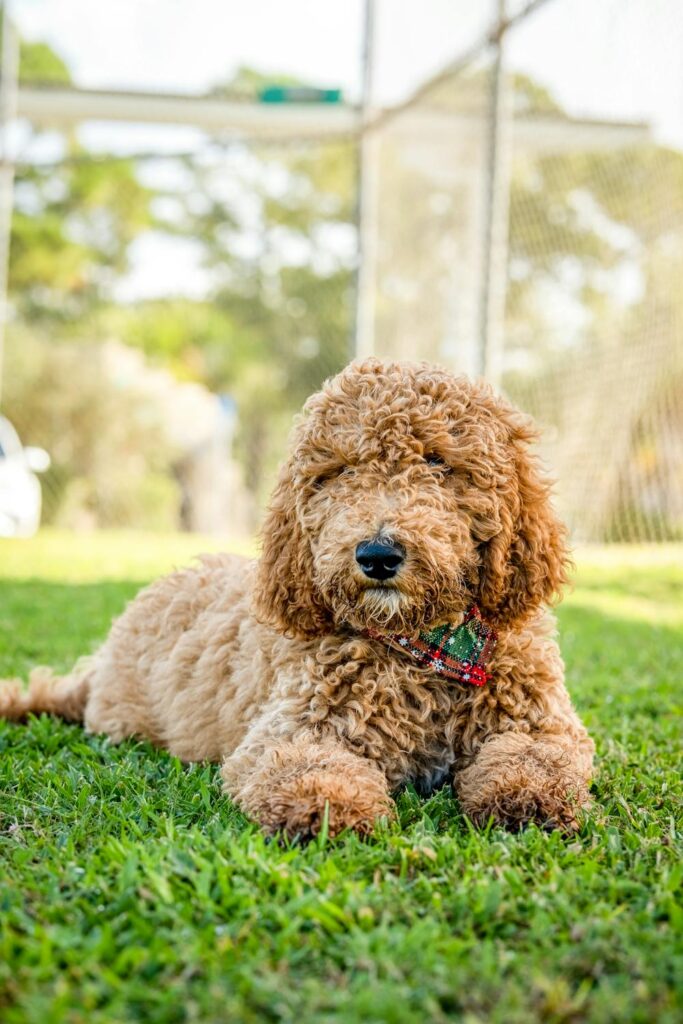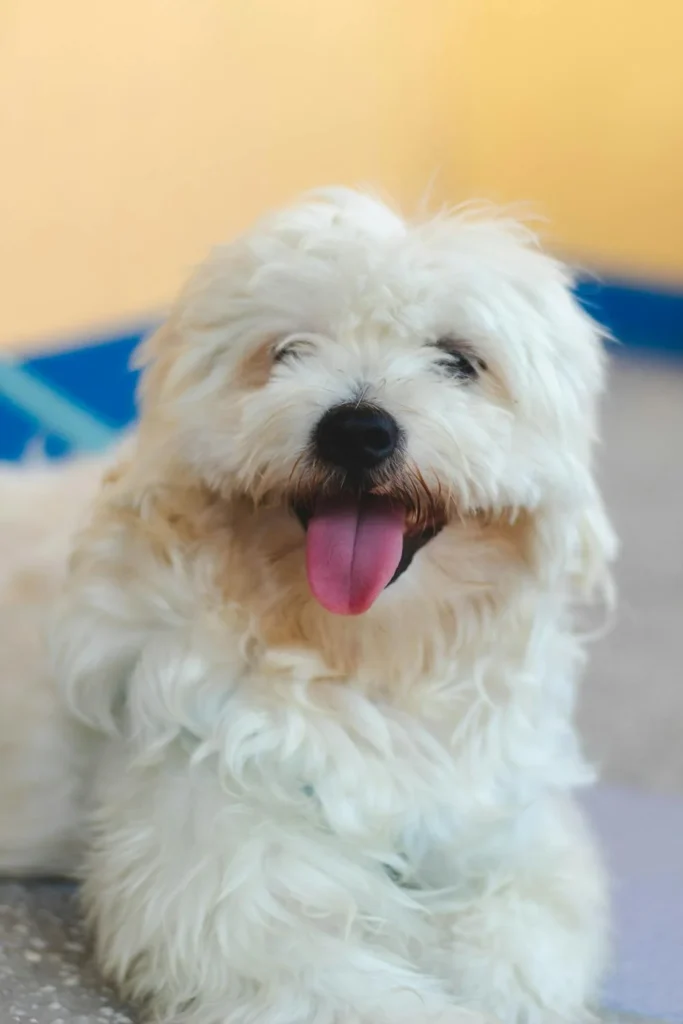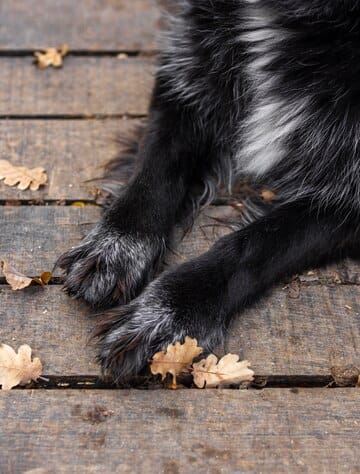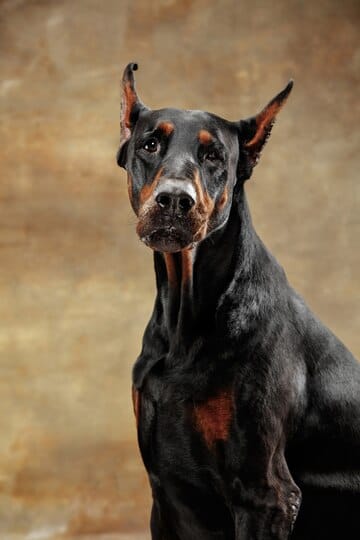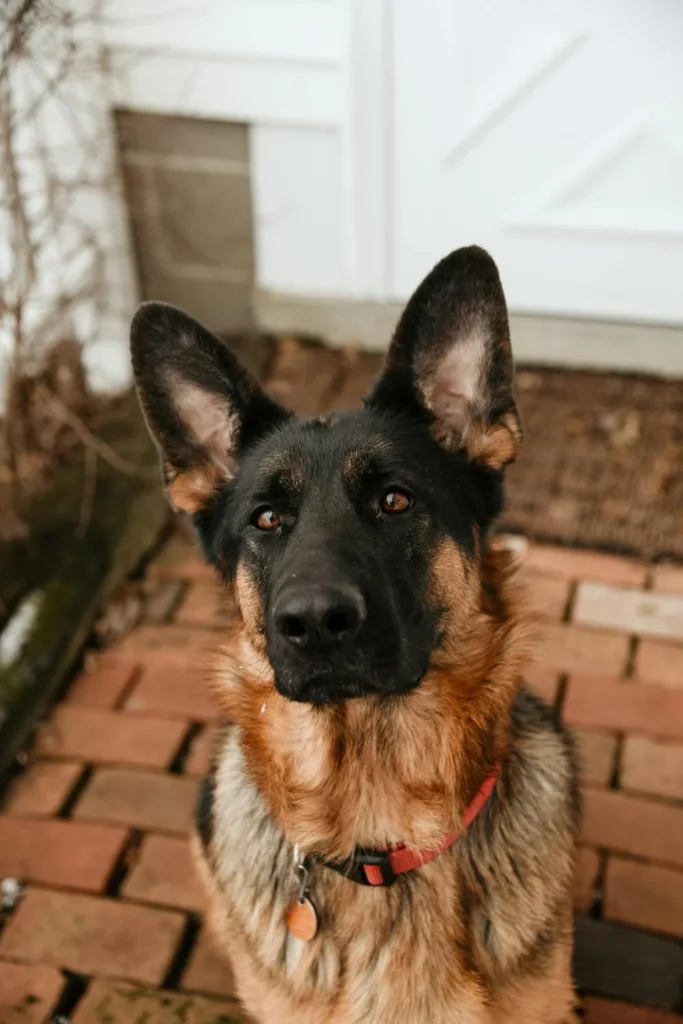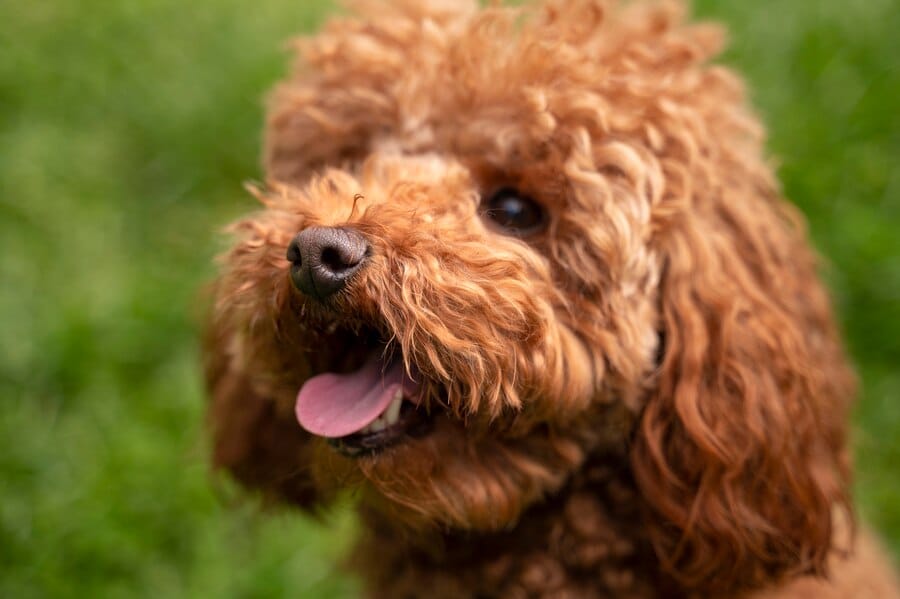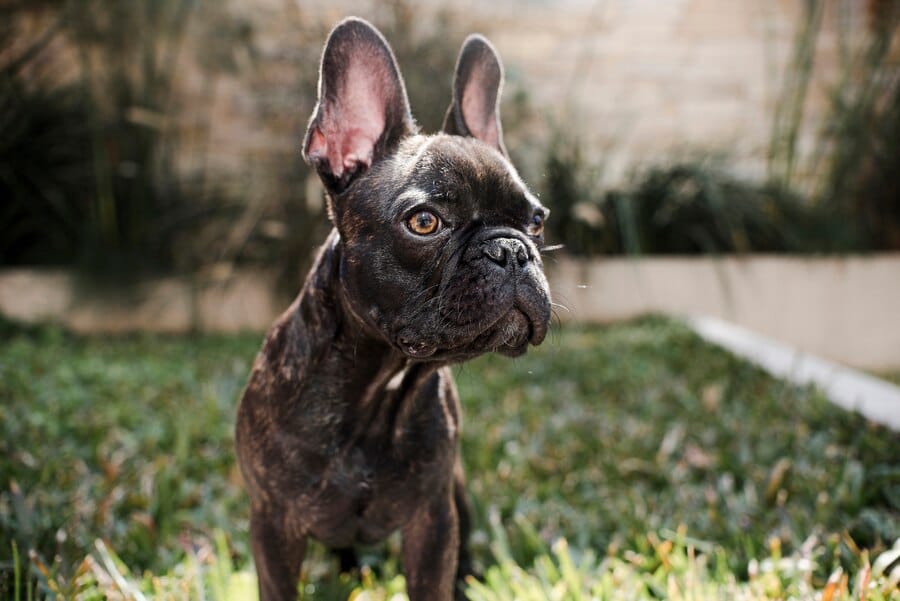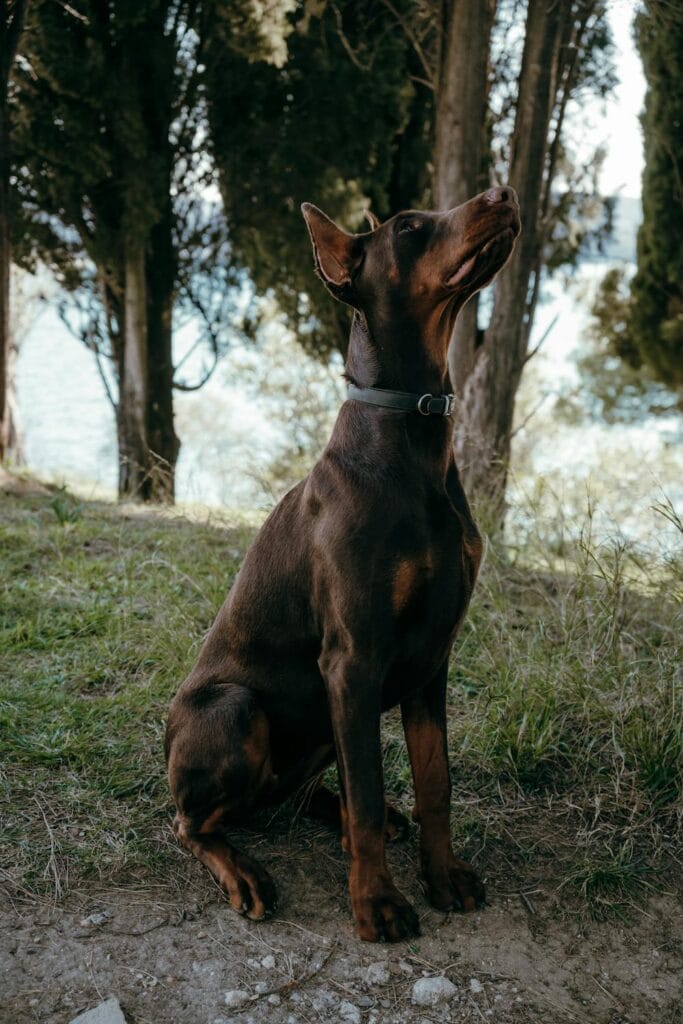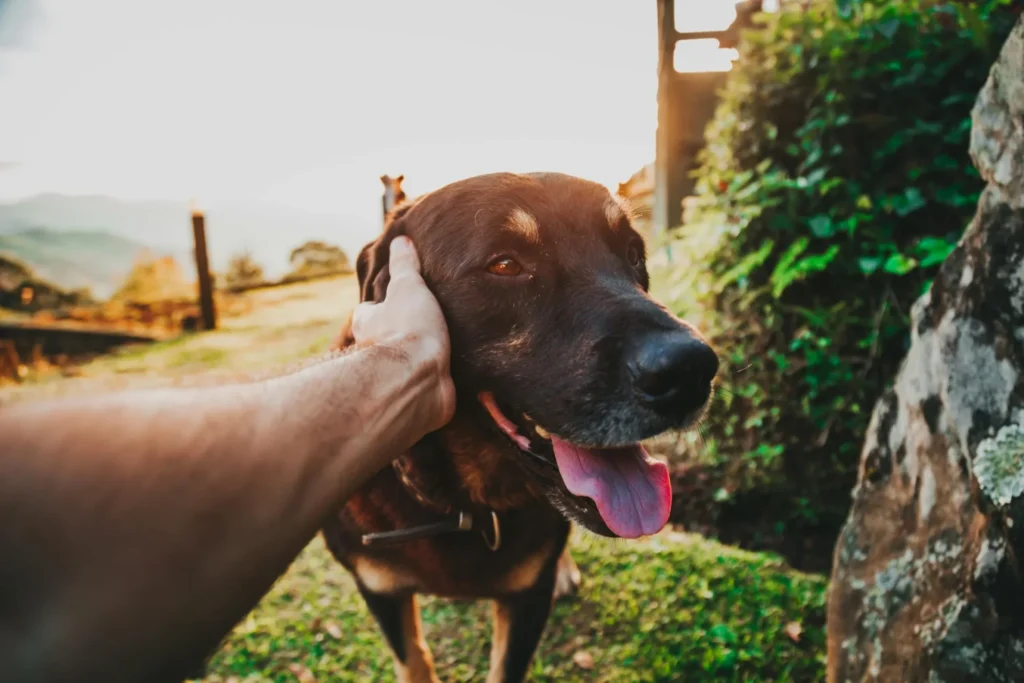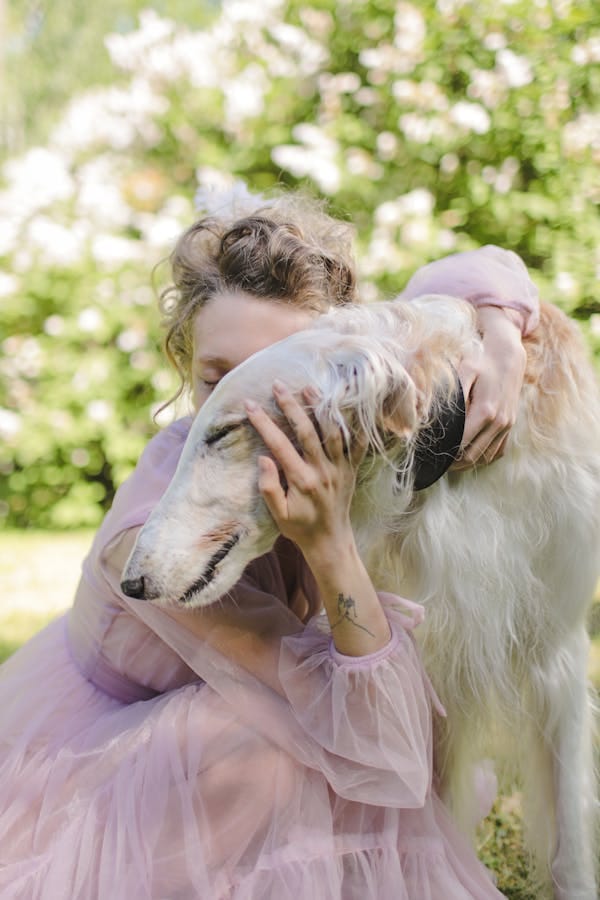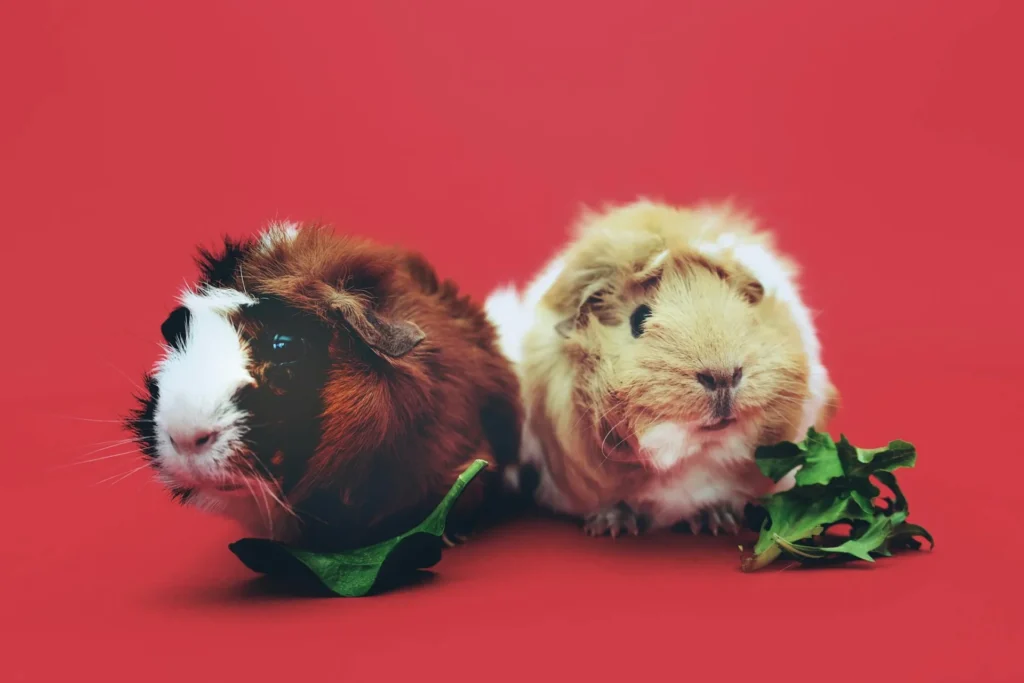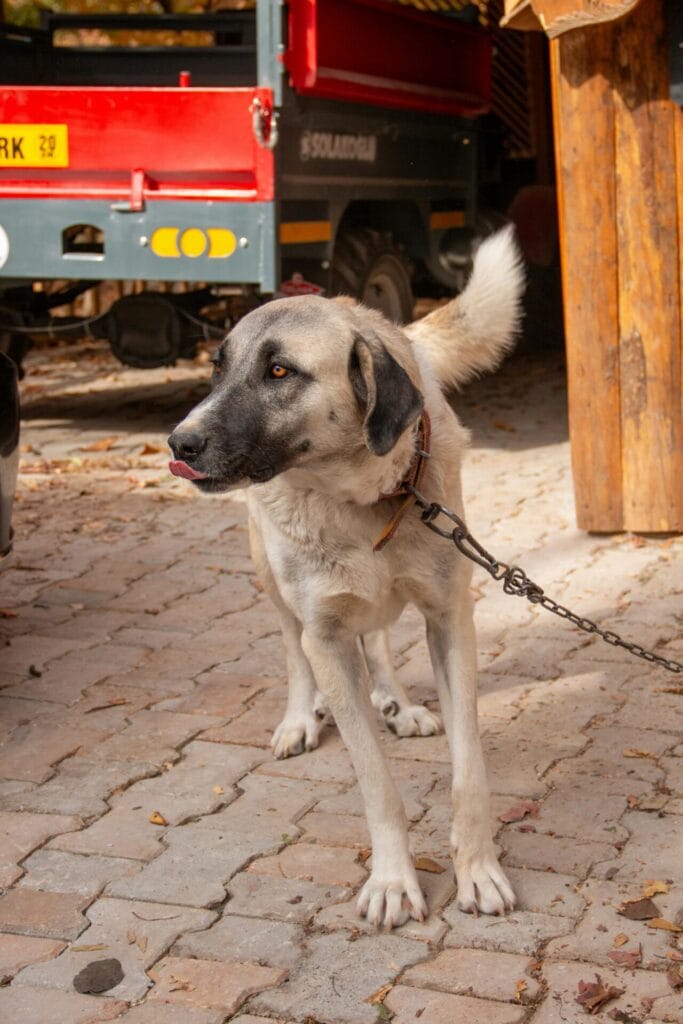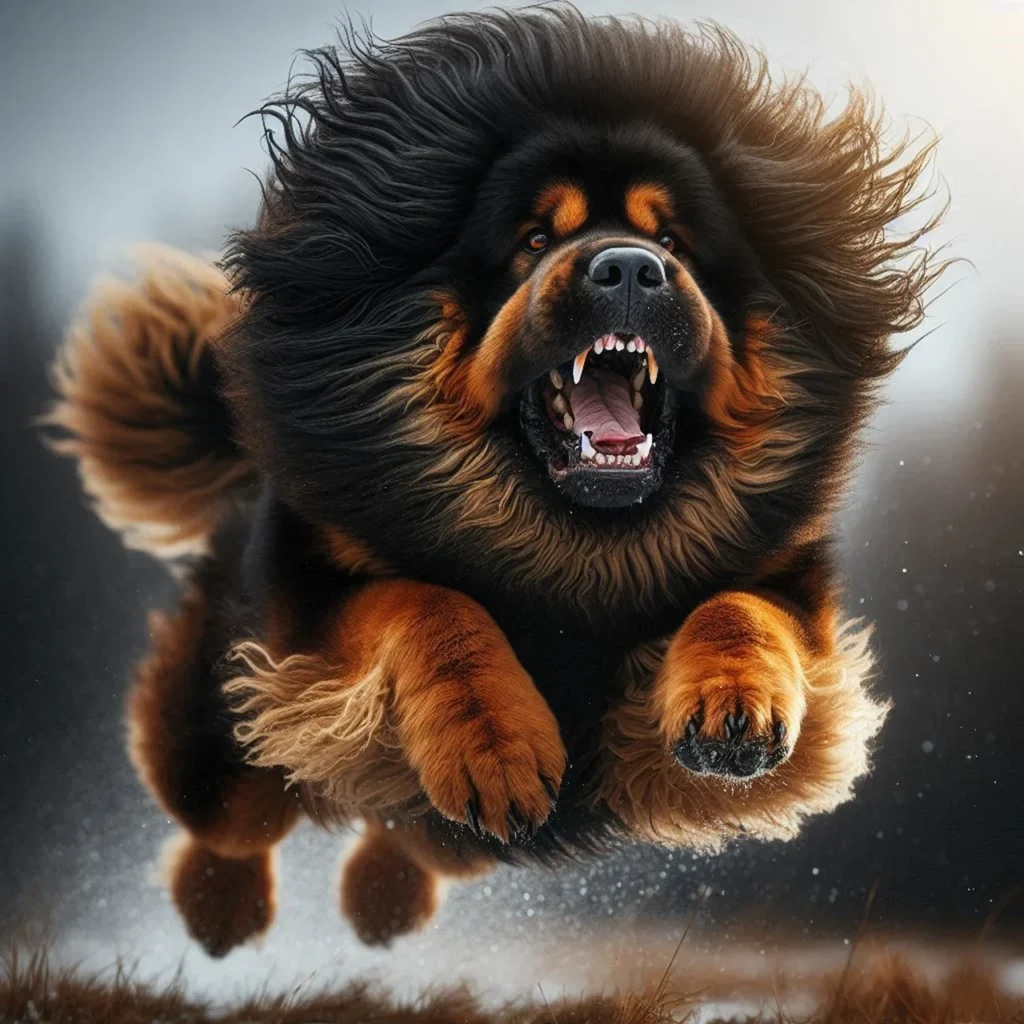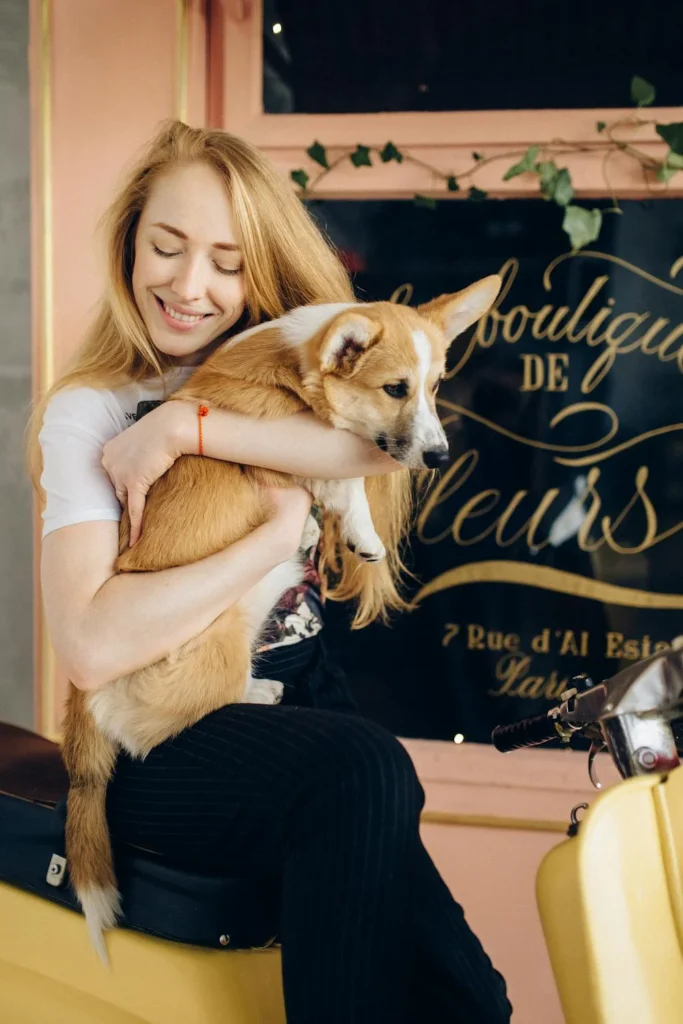- Pug Eyes: The Basics
- Do Pugs Eyes Fall Out?
- How Often Do Pug Eyes Fall Out?
- Signs and Symptoms of Eye Protrusion
- Prevention: Keeping Those Peepers in Place
- Can Pugs’ Eyes Pop Out When They Sneeze?
- Home Remedies for Pug Eye Health
- Professional Solutions and Treatments
- Diet and Nutrition for Healthy Pug Eyes
- Environmental Factors Affecting Pug Eye Health
- Statistics on Pug Eye Issues
- What’s Normal? Understanding Pug Eye Anatomy
- Best and Worst Dog Breeds for Eye Health
- Pug Eye Health Through the Ages
- FAQs About Pug Eye Health
- Q1: How often should I clean my pug’s eyes?
- Q2: Can pug eyes really pop out?
- Q3: Are tear stains normal in pugs?
- Q4: How can I tell if my pug has dry eye?
- Q5: Are pugs more prone to eye infections than other breeds?
- Q6: What’s the best diet for pug eye health?
- Q7: Can pugs wear doggy sunglasses, and do they need them?
- Q8: How often should I take my pug for eye check-ups?
- Q9: Is it normal for my pug’s eyes to bulge slightly?
- Q10: Can pugs get cataracts?
- Q11: How can I protect my pug’s eyes during grooming?
- Q12: Are certain eye colors in pugs more prone to problems?
- Q13: Can allergies affect my pug’s eyes?
- Q14: Is it safe to use human eye drops on my pug?
- Q15: How can I tell if my pug has vision problems?
- Conclusion: Keeping Your Pug’s Eyes Bright and Healthy
Pugs are adorable little dogs with big personalities and even bigger eyes. But those charming peepers can sometimes cause concern for pug owners. Let’s dive into the world of pug eye health, focusing on a particularly worrying issue: eye protrusion, or what’s commonly known as “pug eyes popping out.” We’ll explore everything from the basics to advanced care, so you can keep your pug’s eyes healthy and where they belong – in their sockets! 🐶
Pug Eyes: The Basics
Let’s start with the fundamentals. Pugs are brachycephalic dogs, meaning they have a shortened snout and a flattened face. This adorable feature comes with some challenges, particularly when it comes to their eyes. 👁️
Pugs have large, round eyes that sit in shallow eye sockets. This unique anatomy makes their eyes more prominent and, unfortunately, more vulnerable to injury and other issues. Their eyes are often described as “bulging” or “protruding,” which is a normal characteristic of the breed.
However, this eye structure also puts pugs at risk for various eye problems, including:
- Dry eye
- Corneal ulcers
- Pigmentary keratitis
- Eye infections
- And yes, eye protrusion or “popping out”
Understanding these basics is crucial for any pug owner. It’s not about being alarmed, but being informed and prepared to provide the best care for your furry friend. 🐾
Do Pugs Eyes Fall Out?
Now, let’s address the elephant in the room – or should we say, the eyeball? 👀
The short answer is yes, pug eyes can indeed “fall out.” But before you panic, let’s dive into what this really means and how often it actually happens.
What is Eye Protrusion?
When we talk about a pug’s eye “popping out,” we’re referring to a condition called proptosis. Proptosis occurs when the eyeball is displaced from its socket, causing it to protrude abnormally. It’s a serious condition that requires immediate veterinary attention.
In pugs and other brachycephalic breeds, the shallow eye sockets and bulging eyes make them more susceptible to this condition. However, it’s important to note that true proptosis is relatively rare and usually occurs due to trauma or severe pressure on the head or neck.
Factors Contributing to Eye Protrusion in Pugs
Several factors can increase the risk of eye protrusion in pugs:
- Facial Structure: The brachycephalic skull shape is the primary factor.
- Genetics: Some pugs may be more prone to eye issues due to their genetic makeup.
- Obesity: Excess weight can increase pressure in the head and neck area.
- Collar Use: Improper use of collars, especially choke collars, can put pressure on the neck and potentially affect the eyes.
- Trauma: Accidents, fights with other dogs, or rough play can lead to eye injuries.
Understanding these factors can help you take steps to protect your pug’s delicate eyes. Remember, knowledge is power when it comes to pet care! 💪
How Often Do Pug Eyes Fall Out?
Now that we know it’s possible for pug eyes to protrude, you might be wondering just how common this issue really is. Let’s break it down with some facts and figures. 📊
Incidence of Eye Protrusion in Pugs
While exact statistics are hard to come by, veterinary experts agree that true proptosis (eye protrusion) is relatively rare in pugs. However, pugs and other brachycephalic breeds are at higher risk compared to dogs with longer snouts.
Here’s a rough breakdown:
| Dog Type | Risk of Eye Protrusion |
|---|---|
| Pugs | Higher Risk |
| Other Brachycephalic Breeds | Moderate to High Risk |
| Medium to Large Breeds | Low Risk |
| Long-Snouted Breeds | Very Low Risk |
It’s estimated that less than 1% of pugs will experience true proptosis in their lifetime. However, this doesn’t mean pug owners shouldn’t be vigilant about eye health.
Factors Influencing Frequency
Several factors can influence how often pug eyes might protrude:
- Individual Anatomy: Some pugs have more prominent eyes than others, potentially increasing their risk.
- Lifestyle: Active pugs who engage in rough play might be at higher risk.
- Health Status: Pugs with other eye conditions may be more susceptible.
- Age: Older pugs may have weaker eye muscles, potentially increasing risk.
A Note on Perception
It’s worth noting that many pug owners might mistake normal eye bulging for protrusion. Pugs naturally have prominent eyes, which can sometimes look like they’re “popping out” when they’re actually perfectly normal. This perception can lead to overestimation of how often true eye protrusion occurs.
Remember, if you’re ever concerned about your pug’s eyes, it’s always best to consult with a veterinarian. They can provide a professional assessment and put your mind at ease. 🏥👨⚕️
Signs and Symptoms of Eye Protrusion
Knowing what to look for can help you spot potential eye problems in your pug early. Here are the key signs and symptoms of eye protrusion to watch out for:
Immediate Signs 🚨
- Visible Protrusion: The eye appears to be bulging more than usual or is visibly out of its socket.
- Eyelids Behind the Eye: In severe cases, you may see the eyelids trapped behind the protruding eyeball.
- Bleeding: There may be visible bleeding around the eye area.
- Swelling: The area around the eye may appear swollen or puffy.
Secondary Symptoms 😟
- Pain: Your pug may show signs of discomfort, such as pawing at the eye or whining.
- Changes in Behavior: Your pug might become less active or show signs of distress.
- Difficulty Blinking: The affected eye may not close properly.
- Discharge: You might notice increased tearing or mucus from the eye.
- Redness: The eye and surrounding area may appear redder than usual.
- Cloudy Appearance: The eye may look cloudy or have a blue-ish tint.
What to Do If You Notice These Signs
If you observe any of these symptoms, especially the immediate signs, it’s crucial to act fast:
- Stay calm. Your pug will pick up on your emotions.
- Gently cover the eye with a damp, clean cloth if possible.
- Contact your veterinarian or an emergency animal hospital immediately.
- Do not attempt to push the eye back in yourself – this could cause further damage.
Remember, when it comes to eye health, it’s always better to err on the side of caution. Even if you’re unsure, a quick check with a professional can make all the difference in preserving your pug’s vision. 👁️🗨️
Prevention: Keeping Those Peepers in Place
An ounce of prevention is worth a pound of cure, especially when it comes to your pug’s precious peepers. Here are some strategies to help prevent eye protrusion and maintain overall eye health:
1. Use Proper Restraints 🦮
- Opt for a harness instead of a collar to reduce pressure on the neck and head.
- If you must use a collar, ensure it’s not too tight and doesn’t put pressure on the throat.
2. Manage Weight 🍎
- Keep your pug at a healthy weight to reduce pressure on the eyes.
- Consult with your vet about an appropriate diet and exercise plan.
3. Create a Safe Environment 🏠
- Remove low-hanging branches or sharp objects at eye level in your home and yard.
- Use baby gates to prevent falls down stairs.
4. Regular Check-ups 👨⚕️
- Schedule regular veterinary check-ups to catch any eye issues early.
- Consider seeing a veterinary ophthalmologist for specialized care.
5. Gentle Handling 🤲
- Teach children and visitors how to properly handle and play with your pug.
- Avoid rough play or activities that could lead to head trauma.
6. Eye Cleaning Routine 🧼
- Gently clean around your pug’s eyes daily with a damp, soft cloth.
- Use eye wipes specifically designed for dogs if recommended by your vet.
7. Protective Gear 🕶️
- Consider doggy goggles (often called “Doggles”) for outdoor activities or if your pug loves to stick their head out of car windows.
8. Manage Underlying Conditions
- If your pug has allergies or other eye conditions, work with your vet to manage them effectively.
9. Proper Grooming ✂️
- Keep hair around the eyes trimmed to prevent irritation.
- Be cautious when grooming around the eye area.
10. Stress Reduction 😌
- Minimize stressful situations that might cause your pug to strain or increase pressure in their head.
By implementing these preventive measures, you can significantly reduce the risk of eye protrusion and other eye problems in your pug. Remember, a little extra care goes a long way in keeping those adorable pug eyes healthy and happy! 🐾👀
Can Pugs’ Eyes Pop Out When They Sneeze?
It’s a common concern among pug owners – can a simple sneeze really cause their pug’s eyes to pop out? Let’s clear the air on this sneezy situation! 🤧
The Sneezing-Eye Connection
While it might sound alarming, the short answer is: it’s extremely unlikely for a pug’s eyes to pop out from sneezing alone. However, there’s a reason why this concern exists:
- Increased Pressure: Sneezing does momentarily increase pressure in the head and face.
- Bulging Appearance: This pressure can make a pug’s already prominent eyes appear to bulge even more during a sneeze.
- Brachycephalic Anatomy: Pugs’ flat faces and shallow eye sockets contribute to this effect.
What Really Happens When Pugs Sneeze
When a pug sneezes, here’s what typically occurs:
- The eyes may bulge slightly due to increased pressure.
- There might be a small amount of eye discharge.
- The pug might paw at their face or rub it on the ground after sneezing.
These are all normal reactions and don’t usually indicate any serious problem.
When to Be Concerned
While sneezing alone is unlikely to cause eye protrusion, there are situations where you should be more cautious:
- Excessive Sneezing: If your pug is sneezing excessively or violently, it could indicate an underlying health issue.
- Trauma During Sneezing: If your pug hits their head while sneezing, it could potentially lead to eye injuries.
- Pre-existing Eye Conditions: Pugs with existing eye problems might be more susceptible to complications from forceful sneezing.
Sneezing Safety Tips for Pug Owners
To keep your pug safe during sneezing fits:
- Ensure their environment is free of irritants that might trigger sneezing.
- If your pug is prone to sneezing fits, create a soft, padded area where they can sneeze safely.
- Consult your vet if you notice any changes in your pug’s sneezing patterns or eye appearance.
Remember, while the idea of eyes popping out from a sneeze might sound scary, it’s more of a myth than a reality. However, it’s always good to be informed and prepared when it comes to your pug’s health. Bless you, and your pug too! 🐶👃
Home Remedies for Pug Eye Health
While serious eye issues always require professional veterinary care, there are several home remedies and practices you can implement to support your pug’s eye health. Let’s explore some pug-friendly eye care tips you can try at home:
1. Gentle Cleaning 🧼
- Use a soft, damp cloth to gently wipe around your pug’s eyes daily.
- Always wipe from the inner corner outward to prevent spreading bacteria.
2. Tear Stain Removal 💧
- Mix equal parts water and apple cider vinegar.
- Apply the solution with a cotton ball to help remove tear stains.
3. Chamomile Tea Compress 🍵
- Brew a weak chamomile tea and let it cool.
- Use it as a gentle compress to soothe irritated eyes.
4. Saline Solution Rinse 💦
- Use a sterile saline solution (like the kind used for contact lenses) to rinse your pug’s eyes.
- This can help flush out minor irritants.
5. Coconut Oil Massage 🥥
- Gently massage a small amount of virgin coconut oil around (not in) the eyes.
- This can help moisturize the skin and potentially reduce tear staining.
6. Proper Hydration 💧
- Ensure your pug always has access to fresh, clean water.
- Good hydration supports overall eye health.
7. Eye-Friendly Diet 🥕
- Include foods rich in vitamins A, C, and E in your pug’s diet (with vet approval).
- These nutrients support eye health.
8. Regular Exercise 🏃♀️
- Moderate exercise improves circulation, which is beneficial for eye health.
- Just be sure to avoid activities that could lead to eye injuries.
9. Stress Reduction Techniques 😌
- Provide a calm environment and plenty of affection.
- Stress can exacerbate eye issues in pugs.
10. Protective Eyewear 🕶️
- Consider “Doggles” for outdoor activities, especially in windy or dusty conditions.
Remember, these home remedies are meant to supplement, not replace, regular veterinary care. Always consult with your vet before trying new treatments, especially if your pug has existing eye conditions. With a little extra TLC, you can help keep your pug’s eyes bright, clear, and healthy! 👀🐾
Professional Solutions and Treatments
When it comes to serious eye issues in pugs, professional veterinary care is crucial. Let’s explore the various treatments and solutions that veterinarians might recommend for different pug eye problems:
1. Eye Protrusion (Proptosis) 🏥
- Emergency Surgery: Immediate surgical intervention to replace the eye in its socket.
- Antibiotic Treatment: To prevent infection post-surgery.
- Pain Management: Medications to manage discomfort during recovery.
2. Dry Eye (Keratoconjunctivitis Sicca) 💧
- Artificial Tears: To lubricate the eye and provide comfort.
- Cyclosporine or Tacrolimus: Medications to stimulate tear production.
- Corticosteroids: To reduce inflammation in severe cases.
3. Corneal Ulcers 🔬
- Antibiotic Eye Drops: To prevent or treat bacterial infections.
- Pain Medications: To manage discomfort.
- Protective Collar: To prevent further injury during healing.
- In severe cases: Surgery may be necessary to repair the cornea.
4. Pigmentary Keratitis 🎨
- Topical Medications: To reduce pigment formation and inflammation.
- Cyclosporine: To manage immune-mediated reactions.
- In advanced cases: Surgery to remove excess pigment might be recommended.
5. Eye Infections 🦠
- Antibiotic Eye Drops or Ointments: To treat bacterial infections.
- Antifungal Medications: For fungal infections.
- Antiviral Treatments: In cases of viral eye infections.
6. Glaucoma 🔍
- Eye Drops: To reduce intraocular pressure.
- Oral Medications: To manage pain and inflammation.
- Surgery: In severe cases, to improve fluid drainage or remove the eye if vision is lost.
7. Cataracts 🌫️
- Surgical Removal: To remove the cloudy lens and potentially replace it with an artificial one.
- Post-operative Care: Including eye drops and medications to prevent complications.
8. Cherry Eye 🍒
- Surgical Repositioning: To tuck the prolapsed gland back into place.
- In some cases: Removal of the gland might be necessary.
9. Entropion (Inward Rolling Eyelids) 👁️
- Temporary Tacking: For young pugs, to see if the condition resolves with growth.
- Surgical Correction: To permanently fix the eyelid position in adult dogs.
10. Progressive Retinal Atrophy (PRA) 🕯️
- Nutritional Supplements: To support retinal health, though there’s no cure for PRA.
- Management Strategies: To help your pug adapt to vision loss.
Diagnostic Tools Used by Veterinarians 🔬
To accurately diagnose and treat eye conditions, vets may use:
- Ophthalmoscope: For detailed eye examinations.
- Tonometry: To measure intraocular pressure.
- Fluorescein Stain: To detect corneal ulcers or scratches.
- Schirmer Tear Test: To measure tear production.
- Electroretinography: To assess retinal function.
Remember, early detection and treatment are key to managing pug eye health issues. Regular check-ups with your vet can catch problems before they become severe. Always follow your vet’s advice and complete any prescribed treatments fully. 🏥👨⚕️
Diet and Nutrition for Healthy Pug Eyes
What your pug eats plays a crucial role in their overall health, including the health of their eyes. Let’s explore how diet and nutrition can contribute to keeping those adorable pug peepers in tip-top shape! 🥕👀
Essential Nutrients for Eye Health
- Vitamin A: Crucial for eye function and night vision.
- Vitamin C: An antioxidant that helps prevent cataracts.
- Vitamin E: Protects eyes from free radical damage.
- Omega-3 Fatty Acids: Support retinal health and may help prevent dry eye.
- Lutein and Zeaxanthin: Antioxidants that protect against harmful light waves.
- Zinc: Helps vitamin A move from the liver to the retina.
- Beta-carotene: Converted to vitamin A in the body.
Pug-Friendly Foods for Eye Health 🍽️
Here’s a list of foods that can boost your pug’s eye health (always introduce new foods gradually and in moderation):
- Carrots: Rich in beta-carotene and vitamin A.
- Blueberries: High in antioxidants.
- Salmon: Excellent source of omega-3 fatty acids.
- Sweet Potatoes: Packed with beta-carotene.
- Pumpkin: Another great source of vitamin A and fiber.
- Eggs: Contain lutein, zeaxanthin, and zinc.
- Leafy Greens: Spinach and kale are rich in antioxidants.
Sample Eye-Healthy Pug Diet Plan
| Meal | Food Items | Benefits |
|---|---|---|
| Breakfast | High-quality dog kibble + small piece of boiled egg | Balanced nutrition + lutein and zeaxanthin |
| Lunch | Cooked salmon (no bones) + steamed carrots | Omega-3 fatty acids + vitamin A |
| Dinner | Lean chicken + mashed sweet potato | Protein + beta-carotene |
| Snacks | Blueberries, small pieces of pumpkin | Antioxidants, fiber |
Hydration is Key 💧
Ensure your pug always has access to fresh, clean water. Proper hydration is essential for eye health and can help prevent dry eye.
Supplements for Pug Eye Health
While a balanced diet should provide most nutrients, some pugs might benefit from supplements. Always consult your vet before adding any supplements to your pug’s diet.
- Fish Oil: For omega-3 fatty acids.
- Multivitamins: To fill any nutritional gaps.
- Lutein and Zeaxanthin Supplements: For additional antioxidant support.
Foods to Avoid 🚫
Some foods can be harmful to pugs and their eye health:
- Excessive Salt: Can lead to fluid retention and increased eye pressure.
- Sugary Foods: May contribute to diabetes, which can affect eye health.
- Artificial Preservatives and Colors: Can cause allergic reactions.
Special Considerations for Pugs
Remember that pugs are prone to obesity, which can indirectly affect eye health. Maintain a balanced diet and proper portion control to keep your pug at a healthy weight.
By focusing on a nutrient-rich, balanced diet, you’re not just supporting your pug’s eye health – you’re contributing to their overall wellbeing. Always consult with your veterinarian about the best dietary plan for your individual pug, especially if they have existing health conditions. 🐶🥗
Environmental Factors Affecting Pug Eye Health
The environment your pug lives in plays a significant role in their eye health. Let’s explore various environmental factors and how they can impact your pug’s peepers, along with tips to create an eye-friendly living space. 🏠👀
Indoor Factors
- Air Quality 💨
- Issue: Dust, pet dander, and airborne allergens can irritate pug eyes.
- Solution: Use air purifiers and clean regularly to reduce airborne particles.
- Humidity Levels 💧
- Issue: Low humidity can lead to dry eyes.
- Solution: Consider using a humidifier, especially in dry climates or during winter.
- Cleaning Products 🧼
- Issue: Harsh chemicals can cause eye irritation.
- Solution: Use pet-safe, non-toxic cleaning products and keep pugs away during cleaning.
- Lighting 💡
- Issue: Poor lighting can strain eyes, while excessive bright light can be irritating.
- Solution: Provide balanced, natural lighting when possible. Avoid exposing pugs to direct, harsh artificial light.
- Smoke 🚭
- Issue: Cigarette smoke can severely irritate pug eyes.
- Solution: Maintain a smoke-free environment.
Outdoor Factors
- UV Radiation ☀️
- Issue: Excessive sun exposure can damage eyes.
- Solution: Provide shaded areas outdoors and consider doggy sunglasses for extended outdoor time.
- Wind and Dust 🌬️
- Issue: Can cause eye dryness and introduce irritants.
- Solution: Limit outdoor time on very windy days or use protective eyewear.
- Plants and Pollen 🌼
- Issue: Some plants and pollen can cause allergic reactions.
- Solution: Identify and remove any eye-irritating plants from your yard. Wipe your pug’s face after outdoor play during high pollen seasons.
- Water Quality 🏊
- Issue: Chlorine and other chemicals in pools can irritate eyes.
- Solution: Rinse your pug’s eyes with clean water after swimming.
Seasonal Considerations
| Season | Potential Issues | Solutions |
|---|---|---|
| Spring | High pollen count | Regular grooming, limited outdoor time on high pollen days |
| Summer | UV radiation, heat | Provide shade, fresh water, and consider doggy sunglasses |
| Fall | Leaf mold, cooler dry air | Keep yard clear of rotting leaves, use a humidifier indoors |
| Winter | Dry indoor air, snow glare | Use a humidifier, limit exposure to bright snow |
Creating an Eye-Friendly Home 🏡
- Floor-Level Hazards: Remove or secure low-hanging objects that could poke your pug’s eyes.
- Safe Play Areas: Ensure play areas are free from sharp edges or protruding objects.
- Proper Bedding: Provide clean, dust-free bedding to reduce eye irritation during sleep.
- Grooming Station: Set up a designated area for regular eye cleaning and grooming.
- Window Barriers: Use window guards or screens to prevent pugs from sticking their heads out of car windows.
Travel Considerations 🚗
- Car Safety: Use a well-ventilated carrier or doggy seatbelt to prevent eye injuries during sudden stops.
- New Environments: Be extra vigilant about potential eye hazards when visiting new places.
- Altitude Changes: Be aware that high altitudes can affect eye pressure. Consult your vet before traveling to high-altitude locations.
By being mindful of these environmental factors and making simple adjustments, you can significantly reduce the risk of eye problems in your pug. Remember, a safe environment is key to keeping those adorable pug eyes healthy and happy! 🐾👁️
Statistics on Pug Eye Issues
Understanding the prevalence and types of eye issues in pugs can help owners be more prepared and proactive in their pet’s eye care. Let’s dive into some statistics and data related to pug eye health. 📊👀
Prevalence of Eye Issues in Pugs
Pugs, like other brachycephalic breeds, are prone to various eye problems. Here’s a breakdown of some common issues:
- Corneal Ulcers: Affects approximately 15-20% of pugs at some point in their lives.
- Dry Eye (Keratoconjunctivitis Sicca): Occurs in about 10-15% of pugs.
- Pigmentary Keratitis: Seen in up to 80% of pugs, though severity varies.
- Entropion: Affects around 5-10% of pugs.
- Cherry Eye: Occurs in approximately 5-8% of pugs.
Age-Related Eye Issue Incidence
| Age Group | Most Common Eye Issues |
|---|---|
| Puppies (0-1 year) | Cherry Eye, Corneal Ulcers |
| Adult (1-7 years) | Dry Eye, Pigmentary Keratitis |
| Senior (7+ years) | Cataracts, Glaucoma |
Comparative Eye Health: Pugs vs. Other Breeds
To put pug eye health in perspective, let’s compare the incidence of certain eye conditions in pugs versus the general dog population:
| Eye Condition | Incidence in Pugs | Incidence in General Dog Population |
|---|---|---|
| Corneal Ulcers | 15-20% | 2-5% |
| Dry Eye | 10-15% | 1-4% |
| Pigmentary Keratitis | Up to 80% | Rare in non-brachycephalic breeds |
| Entropion | 5-10% | 1-2% |
Factors Influencing Eye Health Statistics
Several factors contribute to the higher incidence of eye problems in pugs:
- Facial Structure: The flat face and prominent eyes of pugs make them more susceptible to certain conditions.
- Genetics: Some eye issues have a hereditary component.
- Environmental Factors: Urban living, pollution, and lifestyle can impact eye health.
- Owner Awareness: Increased awareness among pug owners may lead to more reported cases.
Treatment Success Rates
While eye problems are common in pugs, many conditions have good treatment outcomes when addressed early:
- Corneal Ulcers: 90-95% success rate with proper treatment.
- Dry Eye: Manageable in 80-85% of cases with ongoing therapy.
- Cherry Eye: Surgical correction is successful in 85-90% of cases.
- Entropion: Surgical correction has a 95% success rate.
Economic Impact
The cost of treating eye conditions in pugs can be significant:
- Average annual eye-related veterinary costs for pugs: $200-$500
- Cost of major eye surgeries (e.g., cherry eye correction, entropion repair): $500-$2,000+
Prevention and Early Detection
Proactive measures can significantly reduce the risk and severity of eye problems:
- Regular check-ups: Can catch 70-80% of eye issues early.
- Proper hygiene: Reduces the risk of infections by up to 50%.
- Appropriate diet: Can support overall eye health and potentially reduce the risk of certain conditions by 20-30%.
These statistics highlight the importance of regular eye care and prompt attention to any changes in your pug’s eyes. While pugs are more prone to certain eye conditions, many issues can be successfully managed or treated with proper care and early intervention. Always consult with your veterinarian for personalized advice and care for your pug’s unique needs. 🐶👓
What’s Normal? Understanding Pug Eye Anatomy
Pugs have a unique eye structure that sets them apart from many other dog breeds. Understanding what’s normal for pug eyes can help you spot potential issues early. Let’s dive into the fascinating world of pug eye anatomy! 🔬👁️
Basic Pug Eye Anatomy
- Eye Size and Position
- Pugs have large, round eyes that protrude more than those of other breeds.
- The eyes sit in shallow eye sockets, making them more prominent.
- Eyelids
- Pugs often have slightly visible white around the iris (scleral show).
- Some pugs may have a small fold of skin over the inner corner of the eye (nasal fold).
- Tear Production
- Pugs naturally produce more tears than some other breeds to keep their prominent eyes lubricated.
- Pigmentation
- Many pugs have dark pigmentation around their eyes, which is normal and protective.
Normal vs. Abnormal: A Comparative Table
| Feature | Normal | Potentially Abnormal |
|---|---|---|
| Eye Color | Clear, bright | Cloudy, red, or excessively watery |
| Eye Position | Slightly protruding | Sunken or excessively bulging |
| Eyelids | Fully cover the eye when closed | Unable to close fully or rolled inward/outward |
| Tear Stains | Minimal | Excessive, especially if accompanied by redness |
| Blinking | Regular, complete blinks | Excessive blinking or squinting |
| Discharge | Minimal clear discharge | Colored, thick, or excessive discharge |
| Pupil Size | Responsive to light changes | Uneven pupil sizes or non-responsive to light |
Unique Pug Eye Characteristics
- Prominent Eyes 👀
- Pugs’ eyes naturally appear larger and more prominent than those of other breeds.
- This is due to their brachycephalic (flat-faced) skull structure.
- Nasal Folds 🐽
- The skin folds near the nose can sometimes partially obstruct vision.
- Regular cleaning of these folds is important to prevent irritation.
- Tear Production 💧
- Pugs often have more visible tear tracks due to their facial structure.
- Some tearing is normal, but excessive tearing may indicate an issue.
- Scleral Show
- The white part of the eye (sclera) is often visible in pugs, especially when they’re looking to the side.
- Pigmentation 🎨
- Dark pigmentation around the eyes is common and serves as natural sun protection.
- Some pugs may develop more pigmentation on their corneas as they age (pigmentary keratitis).
Age-Related Changes
As pugs age, certain changes in their eyes are normal:
- Slight Cloudiness: A minor increase in cloudiness of the lens is common in older pugs.
- Decreased Tear Production: Older pugs may produce fewer tears, potentially leading to dry eye.
- Changes in Eyelid Tone: The eyelids may become slightly looser with age.
When to Be Concerned
While pug eyes have unique characteristics, certain signs should prompt a veterinary visit:
- Sudden Changes: Any abrupt change in appearance or behavior related to the eyes.
- Persistent Squinting: Squinting that lasts more than a few hours.
- Excessive Discharge: Especially if it’s colored or thick.
- Visible Third Eyelid: If the third eyelid becomes prominently visible.
- Bulging: Eyes that appear to be bulging more than usual.
- Color Changes: Any changes in the color of the eye itself.
Maintaining Healthy Pug Eyes
To keep your pug’s eyes in top shape:
- Regular Cleaning: Gently wipe around the eyes daily with a damp, soft cloth.
- Tear Stain Management: Use pet-safe wipes or solutions to manage tear stains.
- Trim Facial Hair: Keep hair around the eyes trimmed to prevent irritation.
- Protect from Irritants: Use protective eyewear during activities like swimming or in windy conditions.
- Regular Check-ups: Schedule routine veterinary eye exams.
Fun Fact: Pug Vision 🌈
Pugs, like most dogs, are believed to be dichromatic, meaning they see primarily yellows, blues, and grays. Their visual acuity is also less than humans, but they excel in detecting motion and seeing in dim light.
Understanding what’s normal for your pug’s eyes is crucial for maintaining their eye health. Regular observation and care can help ensure those adorable pug peepers stay healthy throughout your pet’s life. Remember, when in doubt, always consult with your veterinarian. They’re the best resource for understanding your individual pug’s eye health needs. 🐾👨⚕️
Best and Worst Dog Breeds for Eye Health
While all dogs can potentially experience eye problems, some breeds are more prone to eye issues than others. Let’s explore which breeds tend to have the best eye health and which ones might need extra attention when it comes to their peepers. 🐕👀
Best Dog Breeds for Eye Health
These breeds generally have fewer genetic predispositions to eye problems:
- Labrador Retriever 🦮
- Known for robust overall health, including eyes.
- Low incidence of hereditary eye conditions.
- German Shepherd
- Generally good eye health, though can be prone to pannus in some lines.
- Strong, well-set eyes less prone to injury.
- Beagle
- Typically have healthy eyes with few breed-specific issues.
- Their moderate-sized eyes are less prone to injury than protruding eyes.
- Australian Shepherd
- Despite their striking blue eyes, they often have good eye health.
- Some lines may carry the merle gene, which requires careful breeding practices.
- Greyhound
- Known for having few eye problems.
- Their deep-set eyes are naturally protected from injury.
Worst Dog Breeds for Eye Health
These breeds often require more attention to eye care due to their anatomy or genetic predispositions:
- Pug 🐶
- Prone to a variety of eye issues due to their brachycephalic structure.
- Common problems include dry eye, corneal ulcers, and pigmentary keratitis.
- Bulldog
- Like pugs, their flat faces predispose them to several eye conditions.
- Often experience cherry eye and entropion.
- Shih Tzu
- Prone to eye injuries due to their protruding eyes.
- Often experience dry eye and progressive retinal atrophy.
- Pekingese
- Their extremely flat faces can lead to severe eye problems.
- Often require surgery to correct eyelid abnormalities.
- Boston Terrier
- Prone to corneal ulcers and cataracts.
- Their prominent eyes are at risk for injury.
Comparative Table: Eye Health in Different Breeds
| Breed | Eye Health Rating | Common Eye Issues | Prevention Tips |
|---|---|---|---|
| Labrador Retriever | Excellent | Few breed-specific issues | Regular check-ups |
| German Shepherd | Very Good | Pannus (in some lines) | UV protection |
| Beagle | Good | Generally healthy eyes | Routine vet visits |
| Pug | Poor | Multiple issues (dry eye, ulcers, etc.) | Daily eye cleaning, regular vet care |
| Bulldog | Poor | Cherry eye, entropion | Regular cleaning, possible surgical correction |
| Shih Tzu | Poor | Dry eye, progressive retinal atrophy | Regular eye drops, genetic testing |
Factors Influencing Eye Health Across Breeds
- Skull Shape: Brachycephalic breeds (flat-faced) are more prone to eye issues.
- Eye Position: Protruding eyes are more susceptible to injury and dryness.
- Genetic Factors: Some breeds have higher rates of inherited eye conditions.
- Size and Activity Level: Larger, more active breeds may be at higher risk for traumatic eye injuries.
Tips for All Breeds
Regardless of breed, all dogs benefit from:
- Regular Vet Check-ups: Annual eye exams can catch issues early.
- Proper Nutrition: A balanced diet supports overall eye health.
- Eye Hygiene: Regular gentle cleaning around the eyes.
- Protection from Elements: Use doggy goggles for breeds with prominent eyes when necessary.
Special Considerations for Pug Owners
Given that pugs are on the “worst” list for eye health, here are some extra tips:
- Daily Eye Cleaning: Gently wipe around the eyes to prevent irritation.
- Moisture Management: Use artificial tears if recommended by your vet.
- Environmental Control: Minimize exposure to irritants like dust and smoke.
- Weight Management: Keeping your pug at a healthy weight can reduce pressure on the eyes.
- Specialized Care: Consider regular visits to a veterinary ophthalmologist.
Remember, while some breeds are more prone to eye issues, individual care and attention can make a significant difference in any dog’s eye health. If you have a breed predisposed to eye problems, like a pug, being proactive about eye care is key to maintaining those adorable puppy dog eyes throughout their life. 🐾🏥
Pug Eye Health Through the Ages
Understanding how pug eye health evolves throughout their lifespan is crucial for providing appropriate care at each stage. Let’s explore the eye health journey of pugs from puppyhood to their senior years. 🐶👀
Puppy Stage (0-1 year) 🐾
During this stage, pugs’ eyes are developing and particularly vulnerable.
Common Issues:
- Cherry Eye
- Congenital Defects
- Eye Infections
Care Tips:
- Regular vet check-ups to catch any developmental issues early.
- Gentle cleaning around the eyes to prevent infections.
- Protect from potential eye injuries during play.
Young Adult (1-3 years) 🌟
As pugs enter adulthood, some breed-specific issues may start to emerge.
Common Issues:
- Corneal Ulcers
- Dry Eye (early onset)
- Pigmentary Keratitis (beginning stages)
Care Tips:
- Continue regular vet check-ups.
- Start a routine eye cleaning regimen if not already in place.
- Monitor for any changes in tear production.
Adult (3-7 years) 🏆
During these prime years, maintaining eye health is key to preventing future problems.
Common Issues:
- Progressive Retinal Atrophy (PRA)
- Entropion
- Advancing Pigmentary Keratitis
Care Tips:
- Annual eye exams with a veterinary ophthalmologist.
- Maintain a healthy diet rich in eye-supporting nutrients.
- Use protective eyewear during high-risk activities.
Mature Adult (7-10 years) 🍁
As pugs enter their senior years, age-related eye issues become more common.
Common Issues:
- Cataracts
- Glaucoma
- Worsening of existing conditions (e.g., dry eye)
Care Tips:
- Increase frequency of vet check-ups to twice yearly.
- Monitor for changes in vision or eye appearance.
- Adjust home environment to accommodate any vision changes.
Senior (10+ years) 👴
In their golden years, pugs may face multiple eye health challenges.
Common Issues:
- Advanced Cataracts
- Age-related Retinal Degeneration
- Chronic Dry Eye
Care Tips:
- Regular comprehensive eye exams.
- Discuss quality of life considerations with your vet.
- Provide extra support for any vision loss.
Comparative Table: Pug Eye Health Through Life Stages
| Life Stage | Common Issues | Prevention Strategies | Treatment Approaches |
|---|---|---|---|
| Puppy | Cherry Eye, Infections | Regular check-ups, Gentle cleaning | Often surgical for Cherry Eye, Antibiotics for infections |
| Young Adult | Corneal Ulcers, Early Dry Eye | Eye cleaning routine, Monitoring | Topical medications, Possible surgery for ulcers |
| Adult | PRA, Entropion | Annual specialist exams, Protective eyewear | Genetic testing, Surgical correction for Entropion |
| Mature Adult | Cataracts, Glaucoma | Twice yearly check-ups, Diet adjustments | Cataract surgery, Glaucoma management |
| Senior | Advanced eye conditions | Frequent vet visits, Home adaptations | Combination of medical and surgical approaches |
Key Takeaways for Lifelong Pug Eye Health 🔑
- Early Detection is Crucial: Regular check-ups throughout life can catch issues before they become severe.
- Consistent Care Routine: Establish and maintain an eye care routine from puppyhood through senior years.
- Adapt to Changing Needs: Be prepared to adjust care strategies as your pug ages.
- Nutrition Matters: A balanced diet supporting eye health is important at all life stages.
- Environmental Considerations: Create a safe environment that evolves with your pug’s changing eye health needs.
- Stay Informed: Keep up with the latest in pug eye health research and treatments.
- Quality of Life Focus: As pugs age, consider how eye health impacts overall quality of life and discuss options with your vet.
Remember, every pug is unique, and their eye health journey may vary. By staying vigilant and providing consistent care, you can help ensure your pug’s adorable eyes remain as healthy as possible throughout their life. Regular communication with your veterinarian is key to navigating the challenges and joys of pug eye health at every stage. 🐾💖
FAQs About Pug Eye Health
Let’s address some of the most common questions pug owners have about their furry friends’ eye health. These FAQs cover a range of topics from basic care to specific concerns. 🤔👀
Q1: How often should I clean my pug’s eyes?
A: It’s recommended to gently clean around your pug’s eyes daily. Use a soft, damp cloth or pet-safe eye wipes to remove any discharge or debris. This helps prevent irritation and infection.
Q2: Can pug eyes really pop out?
A: While rare, it is possible for a pug’s eye to protrude from the socket (proptosis) due to trauma or extreme pressure. This is a medical emergency requiring immediate veterinary attention. However, what often looks like “popping out” is usually just the normal prominence of pug eyes.
Q3: Are tear stains normal in pugs?
A: Some tearing is normal in pugs due to their facial structure. However, excessive tear stains can indicate an underlying issue like blocked tear ducts or eye irritation. If tear stains are persistent or worsening, consult your vet.
Q4: How can I tell if my pug has dry eye?
A: Signs of dry eye in pugs include:
- Redness
- Excessive blinking
- A dull or cloudy appearance to the eyes
- Thick, mucus-like discharge
If you notice these symptoms, have your pug checked by a vet.
Q5: Are pugs more prone to eye infections than other breeds?
A: Yes, pugs are more susceptible to eye infections due to their prominent eyes and facial folds. Regular cleaning and monitoring can help prevent infections.
Q6: What’s the best diet for pug eye health?
A: A balanced diet rich in vitamins A, C, and E, as well as omega-3 fatty acids, can support eye health. Foods like carrots, blueberries, and fish can be beneficial. Always consult your vet before making significant dietary changes.
Q7: Can pugs wear doggy sunglasses, and do they need them?
A: Yes, pugs can wear specially designed dog goggles (“doggles”). They can be helpful in protecting pug eyes from UV rays, wind, and debris, especially during outdoor activities or for pugs with existing eye conditions.
Q8: How often should I take my pug for eye check-ups?
A: Adult pugs should have annual eye exams, while senior pugs (over 7 years) may benefit from twice-yearly check-ups. Puppies should have their eyes checked during routine puppy visits.
Q9: Is it normal for my pug’s eyes to bulge slightly?
A: Yes, pugs naturally have prominent eyes that may appear to bulge slightly. However, if you notice a sudden increase in bulging or if one eye appears more prominent than the other, seek veterinary care immediately.
Q10: Can pugs get cataracts?
A: Yes, pugs can develop cataracts, especially as they age. Regular check-ups can help detect cataracts early. Surgical options are available for severe cases.
Q11: How can I protect my pug’s eyes during grooming?
A: Be gentle when grooming around the face. Use tear-free shampoos, avoid getting water or products directly in the eyes, and consider using a snood or eye protective ointment during bath time.
Q12: Are certain eye colors in pugs more prone to problems?
A: While eye color itself doesn’t necessarily indicate health issues, pugs with lighter-colored eyes may be more sensitive to light. All pug eyes, regardless of color, require the same level of care and attention.
Q13: Can allergies affect my pug’s eyes?
A: Yes, allergies can cause eye irritation in pugs, leading to redness, itching, and excessive tearing. If you suspect allergies, consult your vet for appropriate treatment options.
Q14: Is it safe to use human eye drops on my pug?
A: No, never use human eye drops on your pug without veterinary approval. Some human medications can be harmful to dogs. Always use pet-specific products recommended by your vet.
Q15: How can I tell if my pug has vision problems?
A: Signs of vision problems in pugs may include:
- Bumping into objects
- Reluctance to jump or climb stairs
- Startling easily
- Changes in behavior or activity level
If you notice these signs, have your pug’s eyes examined by a vet.
Remember, while these FAQs provide general information, every pug is unique. Always consult with your veterinarian for personalized advice regarding your pug’s eye health. Regular check-ups and prompt attention to any changes are key to maintaining those adorable pug peepers! 🐶💖
Conclusion: Keeping Your Pug’s Eyes Bright and Healthy
As we wrap up our comprehensive guide to pug eye health, let’s summarize the key points and provide some final thoughts on maintaining those adorable pug peepers. 🐾👀
Key Takeaways
- Proactive Care is Crucial: Regular check-ups and daily eye cleaning are essential for pug eye health.
- Know Your Pug’s Normal: Familiarize yourself with what’s normal for your pug’s eyes to quickly spot any changes.
- Diet Matters: A balanced diet rich in eye-supporting nutrients can contribute to overall eye health.

